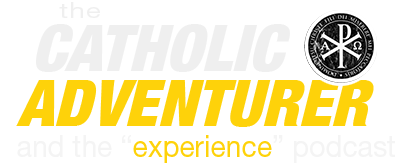In a recent exchange in the Wall Street Journal, Bishop Thomas Paprocki of Springfield, Illinois, responded to Father Gerald J. Bednar’s critique regarding the practice of praying the St. Michael prayer after Mass. Here’s a summary of this theological discussion:
Father Bednar’s View
- Father Bednar, a retired priest from Cleveland, argued in his letter that the Vatican had historically discouraged the St. Michael prayer post-Mass, claiming it disrupts the liturgical integrity. He stated that the prayer shifts the focus from God to a saint, which he sees as inappropriate after the liturgical conclusion where all petitions are directed to God.
Personally I think Father Bender has some other reason for opposing the use of this prayer after the mass. His argument to the Post sounds like something a Cafeteria Catholic—a barely-practicing Catholic with little knowledge of the faith—might present. It’s not even a weak argument, it’s a non-argument that might achieve nods and golf-applause from secular readers, but it would never stand up to scrutiny by someone more in touch with the facts of the Catholic faith, and specifically the Liturgy. You’ll see that demonstrated in this very next paragraph.
Bishop Paprocki’s Rebuttal
- Disagreeing with Bednar, Bishop Paprocki clarified that the Mass officially concludes before the St. Michael prayer begins. So, any prayer following the final blessing and dismissal is outside the liturgy itself, making it not a private devotion but a communal act when done publicly. Paprocki emphasized the necessity of invoking St. Michael’s protection against evil, especially in our current times, arguing that it complements, rather than detracts from, the mission to spread God’s kingdom.
The fact is satan hates the mass. He screams when mass is celebrated, and especially at the consecration of the Eucharist. I think the recitation of the St. Michael’s prayer is highly appropriate after mass has concluded. I think people should say it every day, whether or not they attend daily mass.
Facts and Holy Figures
St. Michael, the protector of the Holy Church and a universal guard against evil. He has been invoked through prayers composed by Pope Leo XIII following a vision he had, where he allegedly witnessed an exchange between Our Lord and the devil, in which satan was said to have been granted a request to have extra latitude to challenge humanity and the church for 100 years. The prayer was traditionally said at the end of every Low Mass until changes post-Vatican II. Despite its removal from the formal liturgy, its significance has been reaffirmed by subsequent popes, including Pope John Paul II and Pope Francis, who have encouraged its recitation. It has made its after-mass return over the past several years in many dioceses, including my own.
Conclusion
This dialogue between Paprocki and Father Bednar highlights a broader discussion on the significance and reality of personified evil, i.e. “Does the devil exist, does he have any power at all, and why should we care?” It also highlights the role of traditional prayers in modern Catholic life, and the undercurrent of ant-traditionalism (lowercase-t ‘tradition’) in the church. Some people cling a little too much to what is old, but is it more dangerous to find all traditional “things” repellant and discordant with a modern-day church? I’d say so.
Hey, don’t forget to sign up for my newsletter! And thanks for considering a tip to support my work.
 *Tips help me cover the expenses of operating this apostolate. Thanks for considering it
*Tips help me cover the expenses of operating this apostolate. Thanks for considering it
Ave Maria, Virgo Fidelis!


